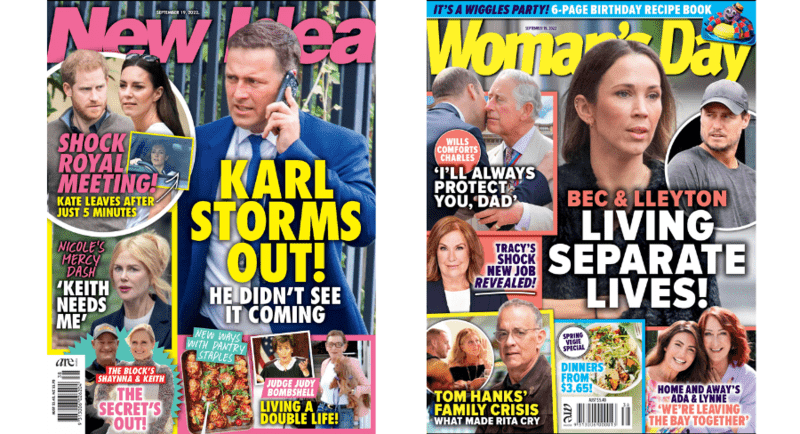Almost three-quarters (69%) of women aged over 40 believe they are invisible to advertisers, according to Are Media’s Susan Armstrong.
Armstrong, the general manager – entertainment at Are Media, who oversees publications including Who, Woman’s Day, New Idea, TV WEEK, Take 5 and That’s Life, told Mediaweek, that women aged 40 to 60 are being overlooked and underserved by brands and advertisers.
“Women in midlife feel invisible,” said Armstrong. “69% of women in midlife feel like advertisers ignore them completely.”
“It’s one of the biggest mistakes that advertisers and brands can make, because there is this whole demographic of women who are being ignored. Women in midlife outspend millennial women by 250%, they control 85% of all household spending. They’ve booked the holidays, they do the life insurance, the pet insurance, but brands ignore us for some unknown, very strange reason. I don’t know what it is. But it’s madness.”
Armstrong told Mediaweek this is why Are Media’s titles narrow in and target this audience – and maintain a loyal “and incredibly consistent” readership: “They see themselves in our magazines”.
“That’s who we target, we say, “Hi Margaret in Toowoomba, I see you, I value you”. We target them in print and online with the content that we know they’re looking for. Because everybody else is just ignoring these women who are saying, ‘I have money. I would like to spend it, here I am.’”
While Armstrong won’t comment on readership or circulation numbers, “hundreds and thousands of women every week buy our magazines without fail”. Media reports that the entertainment brands reach an audience of 1.88 million every month, and the print titles have a combined readership of 4.2 million and a cross-platform reach of 5.5 million a month.

Iconic titles with outdated perceptions
Armstrong suggests part of the issue is advertisers and media buyers may have outdated perceptions of the publications and their readers.
“I think people think that our readers buy a magazine for the celebrity gossip, but that is probably 40% of what we do. The other 60% is fashion, beauty, health, travel – It’s a whole combination of things that keeps them coming back every single week without fail.
“It’s not for celebrity gossip that they can get online. It’s all of the stuff that lies beneath it. It’s also that community, and that connection that they have with that brand, that perhaps their mum had, and even their grandmother did.”
Armstrong believes the legacy of its titles and the communities that exist around these publications – such as New Idea, which is 102 years old – is one of the core strengths of Are Media’s titles.
“These brands have been in Australian homes for such a long time and there’s this real trust that our readers have with us. And there’s this huge opportunity to tap into that.”
Among the advertisers that are tapping into this audience are Disney, Freeview, and Carnival Cruises, as well as a host of beauty, fashion and travel brands.
“There are certain brands that are seeing the value, but I just think there is just so much more to tap into. There’s just so much opportunity,” she said.
Are magazines experiencing a comeback?
While 2023 has been quite the year for magazines, with the return of a host of print titles for the likes of ELLE, Harpers Bazaar, Men’s Health, Women’s Health – and even VICE – Armstrong told Mediaweek it’s not about print versus, instead it is “meeting her wherever she wants you to meet her with the content that she’s looking for “.
With big plans for 2024, Armstrong, who is a former journalist who cut her teeth at ACP, signals big plans for the category in the first quarter of next year.
“There’s lots of exciting things happening that we’re going to start sort of putting into play in quarter one. I think it’s going to be protecting the core, which is our print magazines, but also moving into the omnichannel. So ensuring that our readers can find us wherever they want.”
